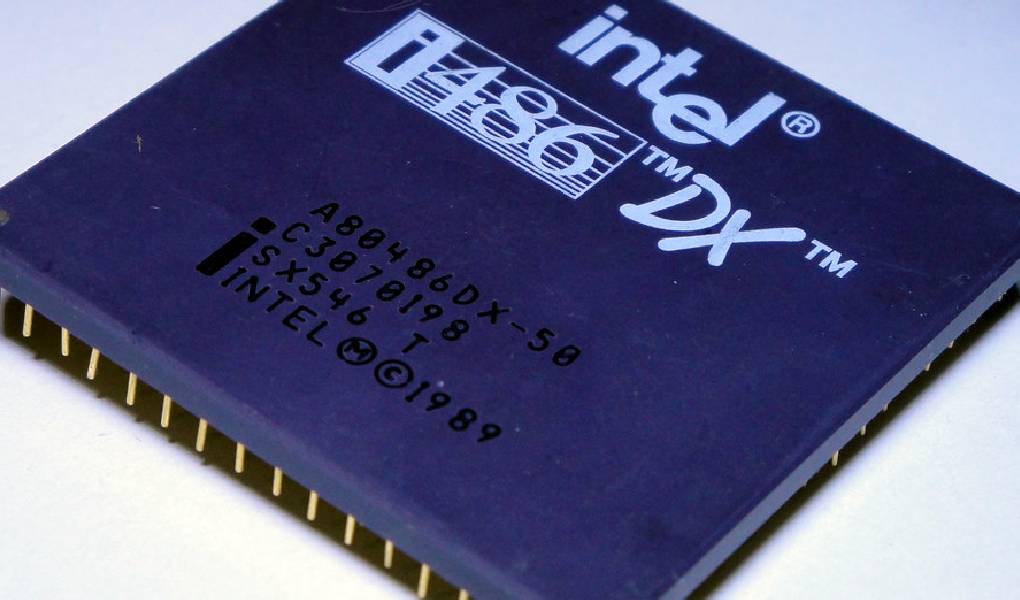Few remember them, even though processors 30 to 40 years ago laid the architectural foundations that are dominant to this day.
Perhaps it is no exaggeration to say that every PC-loving user has some memory of Intel processors. The Santa Clara company continues to play a key role in this field today, developing and shaping its x86 instruction set architectures in the most diverse way possible, based primarily on market and technology needs.
Those who have not only embarked on the obsessive-compulsive PC construction of the past few years, been hardware-dependent for decades have certainly been there and lived through the milestone of today when the Intel 486DX was released. More than twenty years after the debut of the first x86 8086 processor, the company has expanded and reshaped its architecture until it caused a memorable shock to the desktop market.
Everything happens a little later; every event, especially on the other side of the ocean, comes to us more slowly – maybe so with PC use. For the first time, many were the first to encounter Intel’s enhancements in workplaces that were scrapped in workplaces or their offices. However, at the time, most users didn’t necessarily know and understand why 80486 was a step forward and a defining element in Intel’s life.
The Completion Of Architecture And An Engineer
While digging into the memories, a few are likely to take a different view right away, and the 386 families of processors introduced in the fall of 1985 would be more preferred, as it was the world’s first 32-bit processor. However, the successor model has taken what started with 80386 at the architectural level to the next level in performance.
Fine-tuning and improvements in manufacturing technology have paved the way for integrating components that have not been possible so far. It is certainly no coincidence that the 486 was the first central unit to contain more than a million transistors. In the initial series, an 8 KB SRAM cache with a bandwidth of 1 micrometre became part of the chip, previously offered with slower solutions integrated into the motherboard. Increasing computing speed has also been aided by integrating a mathematical co-processor and a dedicated data bus-supported floating-point unit (FPU), which has achieved a 2-2.5-fold increase in speed over certain operations compared to the previous generation.
Although the initial series struggled with a couple of pediatric diseases regarding compatibility and performance characteristics (overheating was a known defect in the early specimens), the series soon got to the top with subsequent sanding and refinement. And this is due somewhere to a person who has proven to be not only an excellent engineer and developer but also a great helmsman.
In addition to his degree in electrical engineering, he worked in the server branch of the 386 development team on architecture and its programmability.
He also wrote a book as a co-author, and from this, it can be assumed that a straight path led to the role of chief engineer of the successor of 486.
In addition to the integration enhancements already mentioned, the clock multiplier has run into a function and concept that has doubled (DX2) or tripled (DX4) the operating frequency of the external data bus to the central clock of the processor. For the DX2, we can remember the 25/50 and 33/66 MHz pairs, while for the DX4, announced in 1994, 33/100 MHz was the peak.
Countless Versions And Long Lives
Intel itself made plenty of sub-versions within the 486 families, followed by other versions limited by partner vendors (not to mention clones and licensed releases). The SX-branded models, freed from the floating-point unit due to more cost-effective manufacturability and some market demands, have run their careers in a particular industry. Still.
The 80486 processors had an official lifespan of 18 years, with Intel halting the latest variants in September 2007. With that, an era is finally over. It is true that the generational change, and at the same time the next milestone, was laid in 1993 by a specific even more successful architecture, the first family of superscalar processors, the P5. The majority call it Pentium.
Also Read: Ultra-Fast Low Latency NVMe Drives And Type of Fast Disks To Choose



